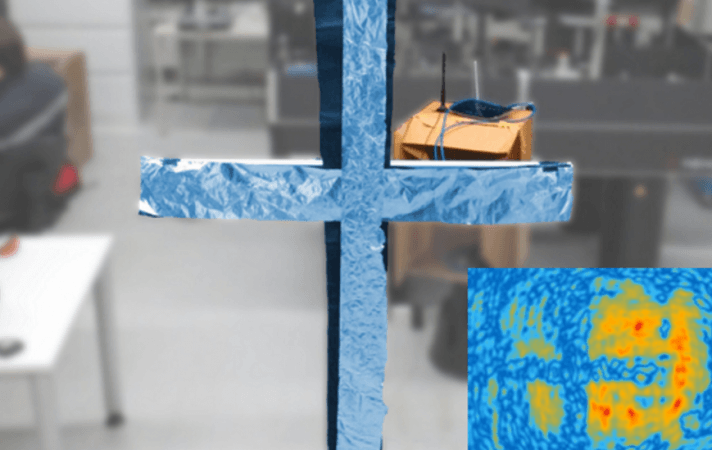
The radio signals emitted by commercial Wi-Fi routers don't merely have internet access to their credit. They can also act like some kind of a radar, and produce images of the transmitter's 3D surroundings, even through walls.
While Wi-Fi imaging is not a new concept, two researchers in Germany came up with a blend of holographic techniques and Wi-Fi imaging to develop a new method, which can peer through walls and provide images 10 times per second.
Although the principle resembles that of standard radar technology, the new method makes use of relatively narrow bandwidths of commercial Wi-Fi routers. The radar systems, on the other hand, use particular emitters with wide bandwidths that produce a diverse range of frequencies.
With narrow bandwidth, researchers have so far found it difficult to produce images from Wi-Fi signals. The presence of multiple reflections from nearby objects makes it even tougher to extract images, leading researchers to use specially adapted systems.
As part of the new experiment, Philipp Holl and Friedemann Reinhard of the Technical University of Munich have fund a unique way of implementing Wi-Fi imaging using a commercial Wi-Fi router, or "hotspot." Unlike previous methods, Holl and Reinhard have used all of the Wi-Fi signal that reaches a detector, and that has done all the trick.
"Because we record all available information—both direct illumination and reflections of the surroundings—our method should be the most accurate for localizing emitters and recognizing objects," Holl said in statement.

For their experiment, the researchers used a commercial Wi-Fi transmitter with a frequency of around 5 GHz. They also placed a Wi-Fi antenna 2.3 metres from the source and moved it across a 3 by 2 metres plane. There was also a metal cross placed in the intervening gap.
The image, which was resulted from the experiment, provided a clear outline of the cross.
"Wherever your laptop can get a Wi-Fi connection, we can record a hologram with a good signal-to-noise ratio," Holl said.
To see how the method works on a larger scale, the researchers used a computer simulation of the signal they would detect for a small building.
"The new method should be able to produce about ten 1000×1000-pixel snapshots per second of a dynamic environment, given the signal strength of a typical Wi-Fi router," the researchers said.
The research was published in the journal Physical Review Letters on May 5, 2017.













